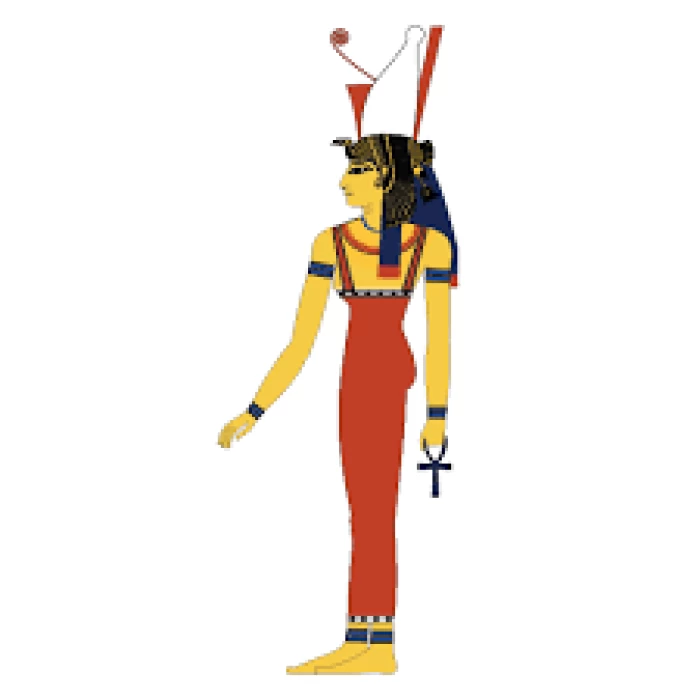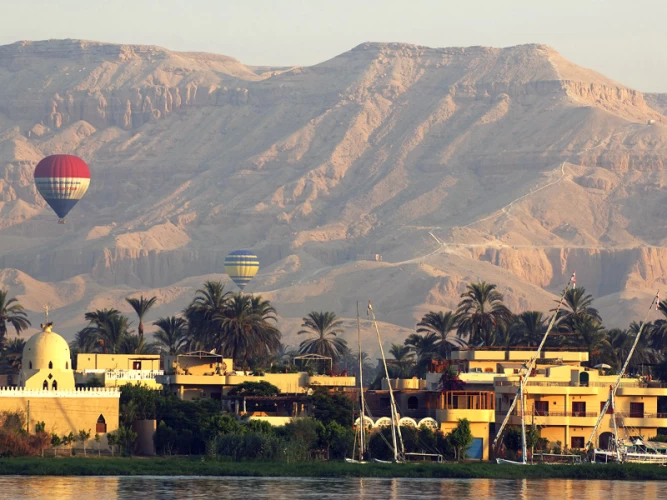
Dea Mut | La dea avvoltoio del cielo
Dea Mut
La dea Mut è rappresentata dall'avvoltoio che in egiziano ha il valore fonetico mwt che significa "madre". La sua iconografia la presenta anche con un aspetto multicolore con un copricapo a forma di avvoltoio sormontato dalla doppia corona dell'Alto e del Basso Egitto. Le fu dedicato un luogo vicino a Tebe, chiamato Tempio di Ascer.
La dea avvoltoio del cielo
Nell'arte, Mut era raffigurata come una donna con le ali di un avvoltoio, con in mano un segno ankh (chiave della vita), che indossava la doppia corona delle terre dell'Alto e del Basso Egitto e un vestito rosso o blu, con la piuma del la dea Maat ai suoi piedi.
Mut è talvolta raffigurato come un cobra, un gatto, una mucca o come una leonessa e come un avvoltoio. Prima della fine del Nuovo Regno, quasi tutte le immagini di figure femminili che indossavano la doppia corona dell'Alto e del Basso Egitto erano raffigurazioni della dea Mut, qui etichettata come "Lady of Heaven, Mistress of all Gods". L'ultima immagine in questa pagina mostra i tratti del volto della dea che lo contraddistinguono come un lavoro svolto a volte tra la XVIII dinastia e relativamente durante il regno di Ramses II.
La regina Hatshepsut fece ricostruire l'antico tempio Mut a Karnak durante il suo regno nella XVIII dinastia. Gli scavi precedenti avevano pensato che Amenhotep III avesse fatto costruire il tempio a causa delle centinaia di statue trovate per Sekhmet che avevano il suo nome. Tuttavia, Hatshepsut, che ha completato un numero enorme di templi ed edifici pubblici, aveva completato i lavori 75 anni prima. Iniziò l'abitudine di dipingere Mut con la corona dell'Alto e del Basso Egitto. Si ritiene che Amenhotep III abbia rimosso la maggior parte dei segni di Hatshepsut mentre si prendeva il merito dei progetti che aveva costruito.
Viaggia in Egitto per visitare i templi e le piramidi egizie per saperne di più sulla mitologia e sulle centinaia di divinità adorate dai Faraoni che erano molto simili agli esseri umani che amavano e odiavano, si sentivano gelosi e combattevano e morirono durante un incredibile mito pieno di gioia, eventi drammatici e d'azione che hanno ispirato registi e produttori cinematografici moderni a creare film di fama mondiale sulla grandezza dei Faraoni e degli Dei che adoravano. Trascorri alcuni giorni a visitare Abydos, Giza, Luxor, Assuan per vedere le tombe dei Faraoni adornate con scene molto chiare, dettagliate e splendidamente dipinte delle varie divinità dell'antico Egitto e molti altri siti
Il nostro team vi aiuterà a viaggiare in Egitto e sperimentare il tempo soleggiato del nostro bel paese durante la Pasqua 2024, grazie alla loro vasta conoscenza del turismo egiziano. Puoi personalizzare il tuo pacchetto selezionando uno dei nostri pacchetti di viaggio in Egitto o sfruttare al massimo il tuo tempo in una breve visita, imparando di più sulla storia egiziana e le sue affascinanti storie e vivendola attraverso tour privati al Cairo. Partecipa a uno dei nostri tour economici in Egitto attraverso il deserto del Sahara, come i tour di Siwa dal Cairo, per esempio, o preferibilmente i tour nel Deserto Bianco d'Egitto. Scoprite i nostri tour di un giorno ad Assuan, fate una gita di un giorno da Assuan ad Abu Simbel, o viaggiate via terra e godetevi i nostri tour di un giorno a Luxor per vedere gli incredibili templi di Karnak, il Tempio di Luxor, il Tempio di Hatshepsut, e vedete le meravigliose tombe splendidamente dipinte nella Valle dei Re, questo è il luogo dove i re e i governanti del nuovo regno riposano in pace e imparate i loro riti di mummificazione e sepoltura.
The goddess Mut is represented by the vulture which in Egyptian has the phonetic value mwt which means "mother". Her iconography also presents her with a multi-colored appearance with a vulture-shaped headdress surmounted by the double crown of Upper and Lower Egypt. A place near Thebes was dedicated to her, called the Temple of Asher.
Mut is sometimes depicted as a cobra, a cat, a cow, or as a lioness as well as a vulture. Before the end of the New Kingdom, almost all the images of female figures wearing the double crown of Upper and Lower Egypt were depictions of the goddess Mut, labeled here as "Lady of Heaven, Mistress of all Gods". The last image on this page shows the features of the goddess's face which mark this as a work done sometime between the 18th dynasty and relatively in the reign of Ramses II.
Queen Hatshepsut had the ancient Mut temple in Karnak rebuilt during her reign in the 18th dynasty. Previous excavators had thought that Amenhotep III had the temple built because of the hundreds of statues found for Sekhmet which had his name. However, Hatshepsut, who completed a huge number of temples and public buildings, had completed the work 75 years earlier. He began the custom of painting Mut with the crown of both Upper and Lower Egypt. Amenhotep III is believed to have removed most of the signs of Hatshepsut while taking credit for the projects he had built.
The Family Connections of the Goddess Mut
According to ancient texts, Mut had no fathers, as mythology holds that she was the Great Mother. However, despite being a mother goddess, she did not bear children. Instead, she adopted the war and moon goddesses, Mentu and Khonsu, respectively.
To worship the Theban Triad, the ancient Egyptians constructed the Temple of Amun at Luxor...During the 18th and 25th Dynasties, this triad was made up of Amun, his spouse Mut, and their son Khonsu.
Mut Cult
Temples of Mut can still be found in modern-day Egypt and Sudan. This reflects the popularity and devotion Mut enjoyed in ancient times. In Egypt, it became the Temple of Karnak, and in Sudan.
According to history, this temple housed the statue considered to be the actual embodiment of the Ka. The daily Mut cult involved rituals performed by the king and her priestesses. The interior reliefs of the temple depict scenes of priestesses worshipping Mut. Uniquely, these reliefs are the only surviving depictions of women practicing the cult from the ancient Egyptian period...During the 18th century, Pharaoh Hatshepsut ordered the reconstruction of the temple dedicated to Mut at Karnak. Hatshepsut began the tradition of depicting Mut in the crowns of Upper and Lower Egypt. Some historians believe that Amenhotep III removed most of Hatshepsut's markings and took credit for the project.
















